- About Us
- Columns
- Letters
- Cartoons
- The Udder Limits
- Archives
- Ezy Reading Archive
- 2024 Cud Archives
- 2023 Cud Archives
- 2022 Cud Archives
- 2021 Cud Archives
- 2020 Cud Archives
- 2015-2019
- 2010-2014
- 2004-2009
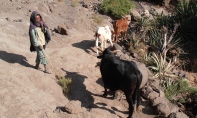 |
February 2011 - Postcard From Africa: |
Ethiopia is apparently the home of many significant things – not just 1980s supergroup anthems.
The Blue Nile rises near Lake Tana in the country’s north, a small part of it flows over the Blue Nile Falls (the majority is diverted through hydroelectric plant), before it heads north-west into the ‘Sudans’ and joins the White Nile in Khartoum, before heading to the Mediterranean.
The spectacular Simien Mountains, a few hours drive north of the Blue Nile along a Chinese funded bitumen road, are home to Africa’s highest bar – at over 10,000 feet. The eroded volcanic landscape of the Ethiopian highlands is also the only habitat of the Gelada Baboon – an unusual grass-eating primate, whose reproductive intentions are displayed in a bright red patch on its chest (which would make things easy at Africa’s highest bar presumably).
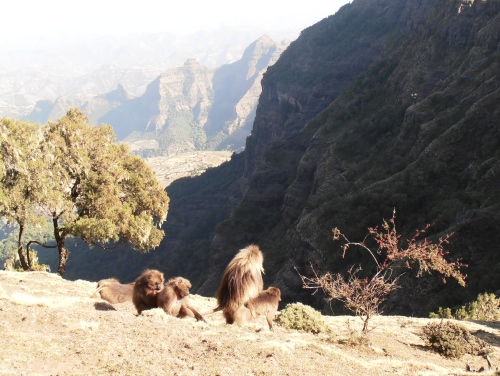
Gelada Baboons ensuring their continued survival in the Simien Mountains
But beyond a few elements of cartographic and zoological certainty, the rest of the story of this fascinating country (and our ten days in it), becomes a slightly incredulous mix of history, myth and Orthodox Christian piety – often not in that order of precedence.
Ethiopia was the only country on the African continent that wasn’t colonised (or scrambled in the 1880’s), suffering only brief Italian occupation in the 1930’s. During this period Mussolini stole a 1700 year old, 24 metre stone stele (obelisk) from the northern highland desert town of Axum, which was only returned from Rome in the past decade – prompting Berlusconi’s trade deficit no doubt.
Perhaps reflecting the ineffective Latino occupation, this ineffective plunder might have had far more significant designs, not least the Arc of the Covenant – but this is where the story becomes a little … Ethiopian. In Axum we not only visited the returned stele, but also the palace of the Queen of Sheba (much debated historical figure 1 for this story), who apparently: travelled to Israel; bore a son with King Solomon – Menelik I – who then relieved his father of Moses’ Arc of the Covenant; which now sits in a derelict monastery with leaking roof back in Axum – apparently ‘unraided’ by Indiana Jones, the Italians, the Israelis or any others.
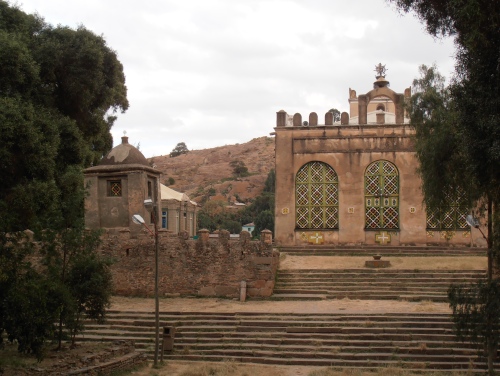
‘Home’ of the Arc of the Covenant – the Church of our Lady Mary of Zion in Axum
The Arc aside, Menelik I was also apparently responsible for the Solomonic line of Abyssinian Kings that lasted 3000 years in Ethiopia until 1974 with the departure of Emperor Haile Selassie (usurped ungraciously by a communist coup). At least the dynasty ended in grandeur as Haile Selassie was apparently the returned Messiah, formerly known as Ras Tafari (the Lion of Judah), and still much revered not just by Ethiopians, but dope-smoking, reggae-music-listening, useless-trinket-making Rastafarian followers world-wide.
And speaking of kings, behind an unlocked fence on a nondescript hillside lay the Tomb of Balthazar, one of the three kings of the Nativity - the one bearing frankincense, if you’ve forgotten your Christmas story.
And so our Sunday School Tour continued over the vast, parched, mountainous land, by small propeller-ed Ethiopian Airlines planes (latest member of the Star Alliance, no less), bumpy dusty 4WDs and even soothing boat trips on the Blue Nile. The most remarkable ‘actual’ (or at least visible) tourist site was in the hot, dry, mountainous town of Lalibela, where over a dozen churches were carved ‘down’ out of volcanic rock in the 12th Century – rather than ‘into’ the rock faces as in Petra. In Lalibela, as in the rest of our route, the few dozen other tourists we saw must have shared our sense of wonder at how undisturbed, un-graffiti-ed, unraided and unattended these sites were.
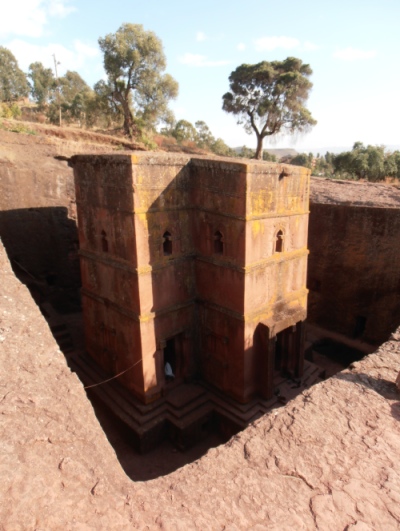
The rock-hewn Church of Saint George in Lalibela
(As it turns out, the only damage that was obvious in this archaeological and spiritual safari was at the Royal Enclosure in the old capital of Gonder, where the half-dozen castles with Portugese, Indian, Jewish and African influences (lions’ dens, horse stables, Turkish baths, concert halls and libraries), were missing ceilings due to the R.A.F. bombing the Italian occupiers in WWII.)
We thought our time in Ethiopia was racing towards a departure to central Africa on Christmas Day. However, unsurprisingly for a ‘timeless country,’ the calendar is eight years behind ours (a Coptic influence – so we were travelling in 2004), Christmas was celebrated on 7 January 2012 (a Gregorian influence – so we missed it) and local clocks are six hours ‘off’ (the first hour of the day being at dawn – so we ignored them and stuck to our $2 digital watch – more Chinese influence in the Horn of Africa).
Whatever the local time, date and year was, we left Addis Ababa on Christmas Day by our reckoning, ironically with Bob Geldof’s Band Aid song – “Do they know it’s Christmas?” playing on the airline PA system. The famine of the mid-1980’s that had spawned the supergroup song had often been mentioned, and Sir Bob was now deified in Ethiopia in a similar way to its own supergroup of mystical figures, dragon-slaying saints, even cannibals from the additional ‘Ethiopian’ books of the New Testament. Now almost thirty years on, the country had moved on from “where nothing ever grows, no rain nor rivers flow” and is one of Africa’s fastest growing countries, with a remarkable people, landscape and history (mindful of the ‘less-historical’ aspects).
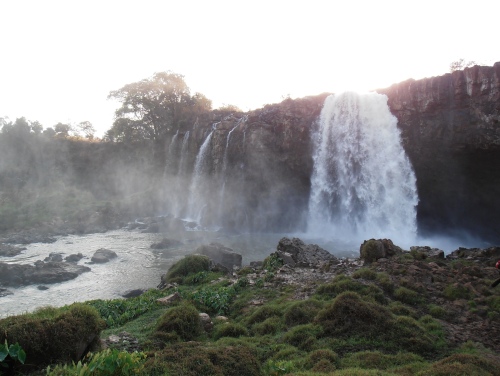
The Blue Nile Falls
There remain constant threats of famine, on-going tensions with its coastal neighbours – Somalia, Djibouti and Eritrea (five European tourists were murdered within weeks of our departure) and the expected growing pains of development in infrastructure, agriculture and natural resources.
But they knew it was Christmas-time in Ethiopia, admittedly two weeks later, but I suspect far more meaningfully than we did.
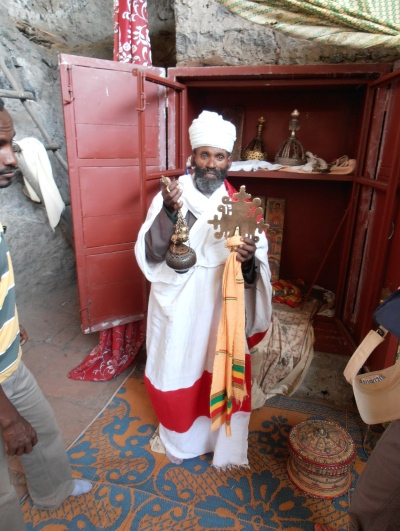
A monastic blessing in Ethiopia
